Books
Books

From the Depths: And Other Strange Tales of the Sea
From atop the choppy waves to the choking darkness of the abyss, the seas are full of mystery and rife with tales of inexplicable events and encounters with the unknown.
In this anthology we see a thrilling spread of narratives: sailors are pitched against a nightmare from the depth, invisible to the naked eye; a German U-boat commander is tormented by an impossible transmission via Morse Code; a ship ensnares itself in the kelp of the Sargasso Sea and dooms a crew of mutineers, seemingly out of revenge for her lost captain.
The supernatural is set alongside the grim affairs of sailors scorned in these salt-soaked tales, recovered from obscurity for the 21st century.
Table of Contents:
From the Depths - F. Britten Austin
The Ship of Silence - Albert R. Wetjen
From the Darkness and the Depths - Morgan Robertson
Sargasso - Ward Muir
Held by the Sargasso Sea - Frank H. Shaw
The Floating Forest - Herman Scheffauer
Tracked: A Mystery of the Sea - C. N. Barham
The Mystery of the Water-Logged Ship - William Hope Hodgson
The Murdered Ships - James Francis Dwyer
The Ship that Died - John Gilbert
Devereux's Last Smoke - Izola Forrester
The Black Bell Buoy - Rupert Chesterton
The High Seas - Elinor Mordaunt
The Soul-Saver - Morgan Burke
No Ships Pass - Lady Eleanor Smith

Blue Monday
Populated by strangers and lovers, the living and the dead, BLUE MONDAY moves across domestic and imagined landscapes exploring the cultural phenomenon of “Blue Monday”. Folding four calendar years into one, these poems trace the seasons and an ever-shifting experience of being in the world. How light can alter the texture of things. How days may be blue elsewhere, with their own purpose.
‘With refreshing self-awareness and flecks of macabre humour, Miller plunges us into tableaux of claustrophobic domestic coupledom – its failed promises and potential for perpetual fantasy – and the mundane but beautiful minutiae of daily existence. Staggering between despair and desire, the voice of these fragments is wonderfully observant and raw.’ - Daniella Shreir

Verlag der Buchhandlung Walther König
Beyond Conceptual Art
Curator, writer and dealer Seth Siegelaub (1941–2013) is legendary for his promotion of Conceptual art in New York in the 1960s and ‘70s.
Acknowledging the unusual scope and essentially unclassifiable nature of his manifold interests and activities, this volume shows how Siegelaub’s projects and collections are underpinned by a deeper concern with printed matter and lists as ways of disseminating ideas. The book’s chapters explore the various facets of and connections in Siegelaub’s work, from his groundbreaking projects with Conceptual artists and his research and publications on mass media and communications theories to his interest in handwoven textiles and non-Western fabrics. It also highlights his collecting activity, which culminates in a unique ensemble of books on the social history of textiles and a textile collection comprising over 750 items from around the world. The survey also reflects on current practices through contributions by contemporary artists, such as Mario Garcia Torres and writer Alan Page, who co-created a new work inspired by Siegelaub’s bibliographic project on time and causality.
With essays by art historians and curators, a previously unpublished conversation between Siegelaub and artist Robert Horvit and an annotated chronology, this comprehensive survey pays homage to one of the most distinctive characters in 20th-century exhibition-making.

When I Sing, Mountains Dance
Near a village high in the Pyrenees, Domènec wanders across a ridge, fancying himself more a poet than a farmer, to "reel off his verses over on this side of the mountain." He gathers black chanterelles and attends to a troubled cow. And then storm clouds swell, full of electrifying power. Reckless, gleeful, they release their bolts of lightning, one of which strikes Domènec. He dies. The ghosts of seventeenth-century witches gather around him, taking up the chanterelles he'd harvested before going on their merry ways. So begins this novel that is as much about the mountains and the mushrooms as it is about the human dramas that unfold in their midst.

No One Is Talking about This
As this urgent, genre-defying book opens, a woman who has recently been elevated to prominence for her social media posts travels around the world to meet her adoring fans. She is overwhelmed by navigating the new language and etiquette of what she terms the portal, where she grapples with an unshakable conviction that a vast chorus of voices is now dictating her thoughts.
When existential threats—from climate change and economic precariousness to the rise of an unnamed dictator and an epidemic of loneliness—begin to loom, she posts her way deeper into the portal's void. An avalanche of images, details, and references accumulate to form a landscape that is post-sense, post-irony, post-everything. Are we in hell? the people of the portal ask themselves. Are we all just going to keep doing this until we die? Suddenly, two texts from her mother pierce the fray: Something has gone wrong, and How soon can you get here? As real life and its stakes collide with the increasingly absurd antics of the portal, the woman confronts a world that seems to contain both an abundance of proof that there is goodness, empathy, and justice in the universe, and a deluge of evidence to the contrary.
Fragmentary and omniscient, incisive and sincere, No One Is Talking About This is at once a love letter to the endless scroll and a profound, modern meditation on love, language, and human connection from a singular voice in American literature.
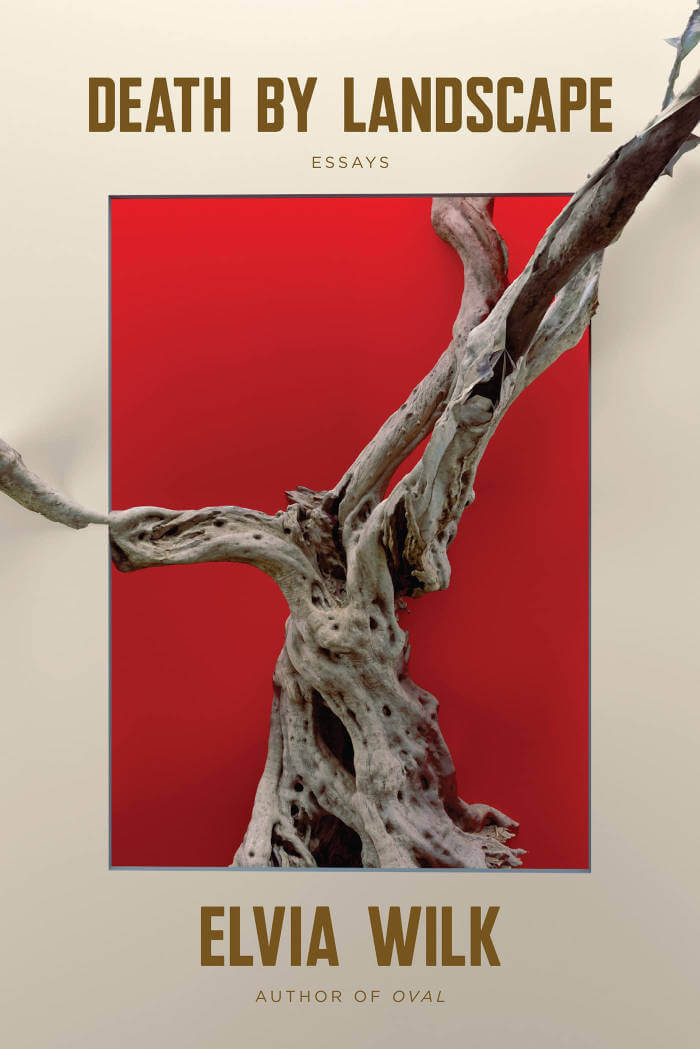
Death by Landscape
From the acclaimed author of the novel Oval comes a book of "fan nonfiction" about living and writing in the age of extinction.
In this constellation of essays, Elvia Wilk asks what kinds of narratives will help us rethink our human perspective toward Earth. The book begins as an exploration of the role of fiction today and becomes a deep interrogation of the writing process and the self.
Wilk examines creative works across time and genre in order to break down binaries between dystopia and utopia, real and imagined, self and world. She makes connections between works by such wide-ranging writers as Mark Fisher, Karen Russell, Han Kang, Doris Lessing, Anne Carson, Octavia E. Butler, Michelle Tea, Helen Phillips, Kathe Koja, Jeff and Ann VanderMeer, and Hildegard von Bingen.
What happens when research becomes personal, when the observer breaks through the glass? Through the eye of the fan, this collection delves into literal and literary world-building projects—medieval monasteries, solarpunk futures, vampire role plays, environments devoid of humans—bridging the micro and the macro and revealing how our relationship to narrative shapes our relationships to the natural world and to one another.

Thirty-Odd Functions of Voice in the Poetry of Alice Notley
Alice Notley has consistently peopled her poetry with the voices of those around her: kids, friends, husbands, strangers, and the dead. Thirty-Odd Functions of Voice in the Poetry of Alice Notley offers an array of interpretations of this technique. While not aspiring to completeness, and limiting its attention to one formal aspect of a single author's work, this poem-essay sketches relationships between intimate speech and literary language.

Spit Temple
The first overview of the work of this seminal multi-disciplinary artist, Spit Temple collects texts and transcriptions of Vicuna's uncategorizable improvised performances, which combine singing, movement, chants, and stories. Also included are a critical introduction by Rosa Alcala, a poetic memoir by Vicuna (translated by Alcala) addressing her life in performance, and a series of response pieces from contemporary writers including Juliana Spahr, Rodrigo Toscano, and Maria Damon.
Cecilia Vicuña is a Chilean poet, artist and filmmaker. The author of twenty poetry books published in Europe, Latin America and the U.S., she performs and exhibits her work widely. A precursor of conceptual, impermanent art and the improvisatory oral performance, her work deals with the interactions between language, earth and textiles. Her recent books are SPIT TEMPLE: THE SELECTED PERFORMANCES OF CECILIA VICUÑA (Ugly Duckling Presse, 2012), Chanccani Quipu, a new artist book forthcoming by Granary Books, and SABORAMI (ChainLinks, 2011). She co-edited The Oxford Book of Latin American Poetry (2009). Since 1980 she divides her time between Chile and New York.

Disidentifications: Queers of Color and the Performance of Politics
An important perspective on the ways outsiders negotiate mainstream culture.
There is more to identity than identifying with one’s culture or standing solidly against it. José Esteban Muñoz looks at how those outside the racial and sexual mainstream negotiate majority culture—not by aligning themselves with or against exclusionary works but rather by transforming these works for their own cultural purposes. Muñoz calls this process “disidentification,” and through a study of its workings, he develops a new perspective on minority performance, survival, and activism.

Child's Replay
Child’s Replay is a hallucinatory homecoming. As we follow THE CHILD in a series of private re-enactments, the present self is revealed as the past’s fragile construction. Pursuing the banality of trauma, a first-person character juxtaposes childhood events with internal misrepresentations, reflections on the emotional toll of migration, psychoanalytic theory, Brazilian history, and literary criticism. An exploration of the impact that language and fiction have on real bodies, Child’s Replay assembles a hybrid portrait of memory and anti-memory.
This publication is limited to 100 copies, which are signed and numbered by the author.
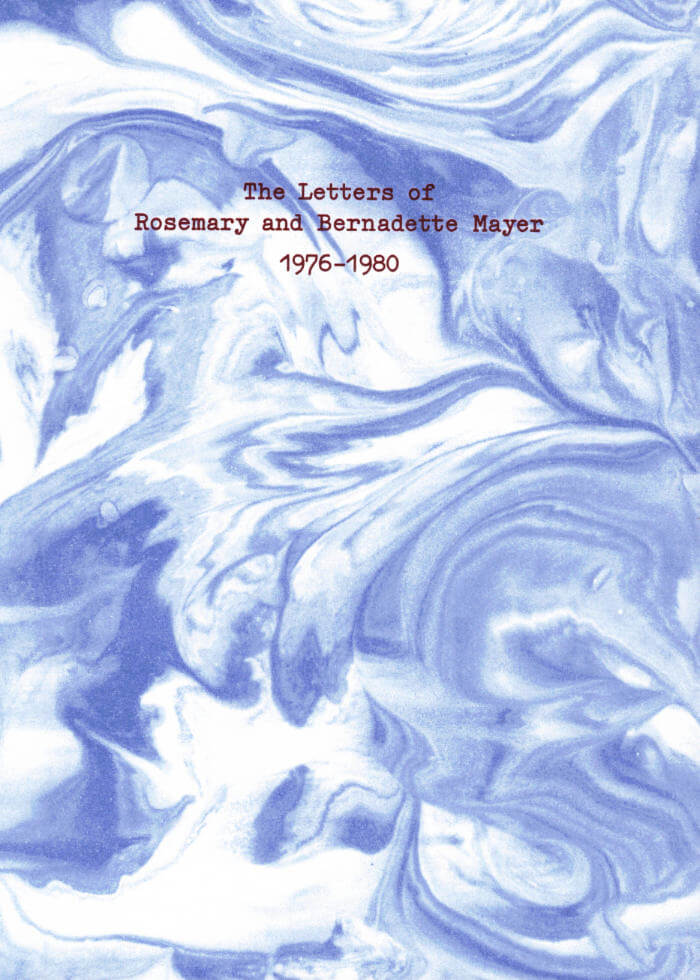
The Letters of Rosemary & Bernadette Mayer, 1976-1980
Bernadette Mayer, Rosemary Mayer
This collection of the correspondence between artist Rosemary Mayer (1943-2014) and poet Bernadette Mayer (born 1945) occurs between the years of 1976 and 1980, a period of rich creativity in New York's artistic avant-garde, and one which includes the development of major bodies of work by the two women.
Rosemary Mayer was creating sculptures, watercolors, books and temporary monuments from weather balloons and snow, while Bernadette Mayer was working on some of her best-known publications, including the book-length poem Midwinter Day and the poetry collection The Golden Book of Words.
Spanning the worlds of Conceptual art, Postminimalism, feminism, the New York School, Language poetry and more, these letters elucidate the bonds of sisterhood through intimate exchanges about art, relationships and everyday life.

I'll Drown My Book: Conceptual Writing by Women
Vanessa Place, Teresa Carmody and 2 more
Conceptual writing is emerging as a vital 21st century literary movement and I’ll Drown My Book represents the contributions of women in this defining moment. Edited by Caroline Bergvall, Laynie Browne, Teresa Carmody and Vanessa Place, I’ll Drown My Book takes its name from a poem by Bernadette Mayer, appropriating Shakespeare. The book includes work by 64 women from 10 countries, with contributors’ responses to the question—What is conceptual writing?—appearing alongside their work. I’ll Drown My Book offers feminist perspectives within this literary phenomenon.
CONTRIBUTORS:
Kathy Acker, Oana Avasilichioaei & Erin Moure, Dodie Bellamy, Lee Ann Brown, Angela Carr, Monica de la Torre, Danielle Dutton, Renee Gladman, Jen Hofer, Bernadette Mayer, Sharon Mesmer, Laura Mullen, Harryette Mullen, Deborah Richards, Juliana Spahr, Cecilia Vicuña, Wendy Walker, Jen Bervin, Inger Christiansen, Marcella Durand, Katie Degentesh, Nada Gordon, Jennifer Karmin, Mette Moestrup, Yedda Morrison, Anne Portugal, Joan Retallack, Cia Rinne, Giovanni Singleton, Anne Tardos, Hannah Weiner, Christine Wertheim, Norma Cole, Debra Di Blasi, Stacy Doris & Lisa Robertson, Sarah Dowling, Bhanu Kapil, Rachel Levitsky, Laura Moriarty, Redell Olsen, Chus Pato, Julie Patton, Kristin Prevallet, a.rawlings, Ryoko Seikiguchi, Susan M. Schultz, Rosmarie Waldrop, Renee Angle, Rachel Blau DuPlessis, Theresa Hak Kyung Cha, Tina Darragh, Judith Goldman, Susan Howe, Maryrose Larkin, Tracie Morris, Sawako Nakayasu, M. NourbeSe Philip, Jena Osman, kathryn l. pringle, Frances Richard, Kim Rosenfeld, and Rachel Zolf.

Cunt Norton
In Cunt Norton, the sequel to her unforgettable CUNT UPS, Dodie Bellamy "cunts" The Norton Anthology of Poetry (1975 edition), setting her text-ravenous cut-ups loose to devour the canonical voices of English literature.
The texts that emerge from this sexual-linguistic encounter are monstrous, beautiful, unashamed: 33 erotic love poems ("the greatest fuck poem in the English language," according to Ariana Reines) that lust after the very aesthetic they resist. "These patriarchal voices that threatened to erase me—of course I love them as well," Bellamy writes. Even as Cunt Norton dismembers the history of English poetry, "cunting" Chaucer and Shakespeare, Emerson and Lowell, it simultaneously allows new sexual members to arise and fill in the gaps, transforming the secret into the explicit, the classically beautiful into the wonderfully grotesque. Bellamy's cunted texts breathe life into literary "masters" with joy, honesty, hilarity, and insatiable passion.
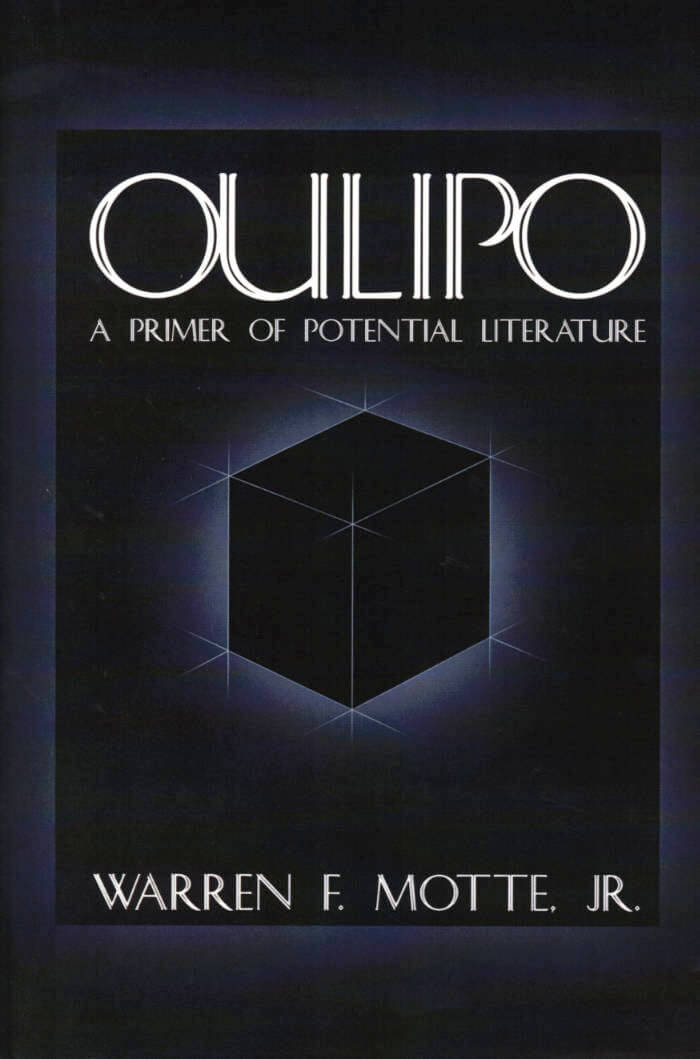
Oulipo: A Primer of Potential Literature
A collection of writings by members of the group known as the Oulipo (OUvroir de LItterature POtentiale), this anthology includes, among others, Italo Calvino, Harry Mathews, Georges Perec, Jacques Roubaud, and Raymond Queneau. Founded in Paris in 1960, the Oulipo views imaginative writing as an exercise dominated by the method of "constraints."

Our Death
Poems of militant despair written for protests, occupations, picket lines, and the back rooms of pubs.
Long recognized as a poet of radiant fury, of lament, and of refusal, Sean Bonney is a modern-day Blake whose poetry reminds us what matters. Our Death, his latest and long awaited first US collection, is full of poems of militant despair that refuse any capitulation to the worldview of the enemy. These poems wander the hinterlands of our absolutely endangered cities, chart the aftermath of the collapse of the social movements of the early part of the decade, and pay homage to the Greek anarchist poet Katerina Gogou.

Assembling a Black Counter Culture
DeForrest Brown, Jr.’s Assembling a Black Counter Culture presents a comprehensive account of techno with a focus on the history of Black experiences in industrialized labor systems—repositioning the genre as a unique form of Black musical and cultural production.
Brown traces the genealogy and current developments in techno, locating its origins in the 1980s in the historically emblematic city of Detroit and the broader landscape of Black musical forms. Reaching back from the transatlantic slave trade to Emancipation, the Industrial Revolution, and the Great Migration from the rural South to the industrialized North, Brown details an extended history of techno rooted in the transformation of urban centers and the new forms of industrial capitalism that gave rise to the African American working class. Following the groundbreaking work of key early players like The Belleville Three, the multimedia output of Underground Resistance and the mythscience of Drexciya, Brown illuminates the networks of collaboration, production, and circulation of techno from Detroit to other cities around the world.
Assembling a Black Counter Culture reframes techno from a Black theoretical perspective distinct from its cultural assimilation within predominantly white, European electronic music contexts and discourse. With references to Theodore Roszak’s Making of a Counter Culture, writings by African American autoworker and political activist James Boggs, and the “techno rebels” of Alvin Toffler’s Third Wave, among others, Brown draws parallels between movements in Black electronic music and Afrofuturist, speculative, and Afrodiasporic practices to imagine a world-building sonic fiction and futurity embodied in techno.
DeForrest Brown, Jr. is an Alabama-raised rhythmanalyst, writer, and representative of the Make Techno Black Again campaign. As Speaker Music, he channels the African American modernist tradition of rhythm and soul music as an intellectual site and sound of generational trauma. On Juneteenth of 2020, he released the album Black Nationalist Sonic Weaponry on Planet Mu. His written work explores the links between the Black experience in industrialized labor systems and Black innovation in electronic music, and has appeared in Artforum, Triple Canopy, NPR, CTM Festival, Mixmag, among many others. He has performed or presented work at Haus der Kulturen der Welt, Berlin; Camden Arts Centre, UK; Unsound Festival, Krakow; Sónar, Barcelona; Issue Project Room, New York; and elsewhere. Assembling a Black Counter Culture is Brown’s debut book.
—
Editor: Rachel Valinsky
Editorial Consultant: Ting Ding and Camille Crain Drummond
Designer: Scott Ponik
Copy Editor: Madeleine Compagnon

One Thing I Know
One Thing I Know is Pati Hill's third novel, first published in 1962, when she was forty-one and had just given birth to her first and only child. It is the last novel she wrote before claiming to "quit writing in favor of housekeeping".
Written in the purest tradition of American coming-of-age stories, One Thing I Know follows a sixteen-year-old girl, Francesca Hollins, as she discovers an unexpected taste for autonomy. The bravado of her affirmation cannot mask the seriousness of her conviction: "One thing I know, I will never be in love again." Francesca's journal begins with this statement, and neither Danny, a young boyfriend already haunted by bourgeois dreams, nor her mother, a woman she believes lacks all imagination, can convince her otherwise. The novel recounts how Francesca discovers an unexpected definition of her independence, something Diane Arbus perceived when she wrote to Hill: "I am more than ever convinced and maybe [Francesca] is too, that people are born old and that life has to be lived backwards and there is no convenient shortcut like forwards."

Blade Pitch Control Unit
Blade Pitch Control Unit is a gathering of Sean Bonney’s work in poetry between 2000-2005. It collects together all the work from his previous pamphlets that he still feels is valid, plus a number of previously unpublished pieces.
The presentation of this work in a single volume makes clear the scope of his project as a psychogeographic/historical exploration of the possibilities of political verse that would seek to obliterate the pitfalls of simple protest or the expression of easily assimilable opinions.
The work moves from psychogeographical registerings of Greenwich and the Isle of Dogs at the time of the Millennium Dome, through excavations of the ghosts of millennial heresies still present in contemporary London, and into a charting of the effects of official mendacity on the psyche of any individual citizen who knows that all private experience is collective.
The events of recent history play a major role, sometimes obliquely, sometimes less so, but Bonney refuses to allow his voice to be merely an outraged commentary on contemporary woes. Instead, he presents a poetry that makes clear that the protestor is also culpable, but equally a poetry that understands that only through a registering of this position can a way out be found.
For Bonney, a poem is typically a highly rhythmic (or arrhythmic) object that seeks through maximum density to communicate a dialectical relationship with the cosmos, and to explore the faultlines of official history and urbanism through which possibilities of liberation can be traced.
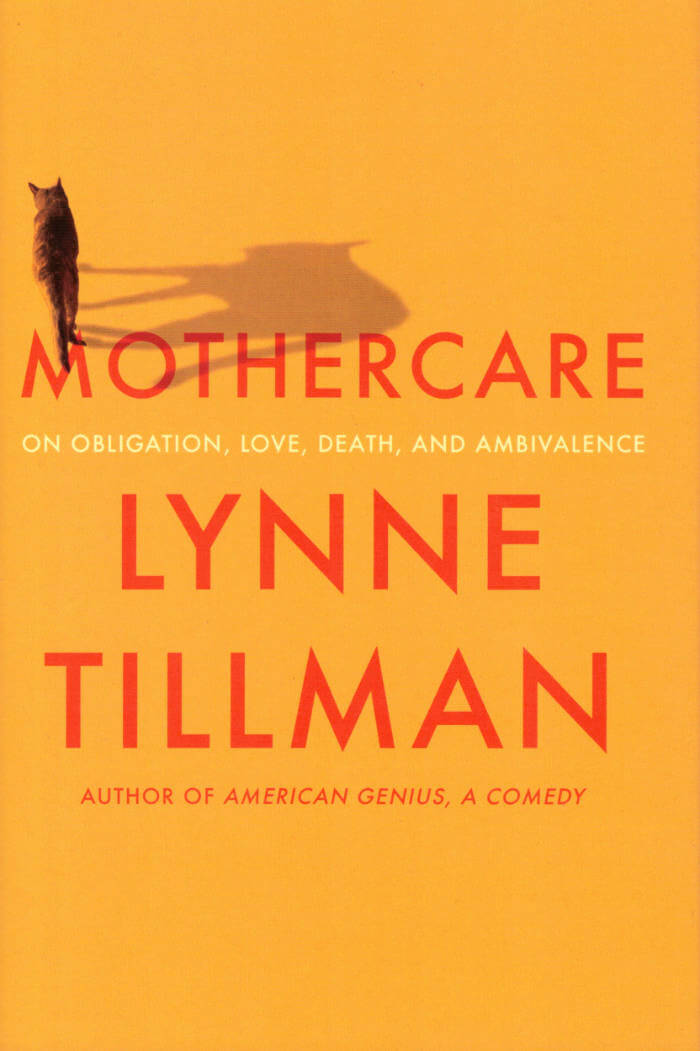
Mothercare: On Obligation, Love, Death, and Ambivalence
When a mother’s unusual health condition, normal pressure hydrocephalus, renders her entirely dependent on you, your sisters, caregivers, and companions, the unthinkable becomes daily life. In MOTHERCARE, Tillman describes doing what seems impossible: handling her mother as if she were a child and coping with a longtime ambivalence toward her.
In Tillman’s celebrated style and as a “rich noticer of strange things” (Colm Tóibín), she describes, without flinching, the unexpected, heartbreaking, and anxious eleven years of caring for a sick parent.
MOTHERCARE is both a cautionary tale and sympathetic guidance for anyone who suddenly becomes a caregiver. This story may be helpful, informative, consoling, or upsetting, but it never fails to underscore how impossible it is to get the job done completely right.
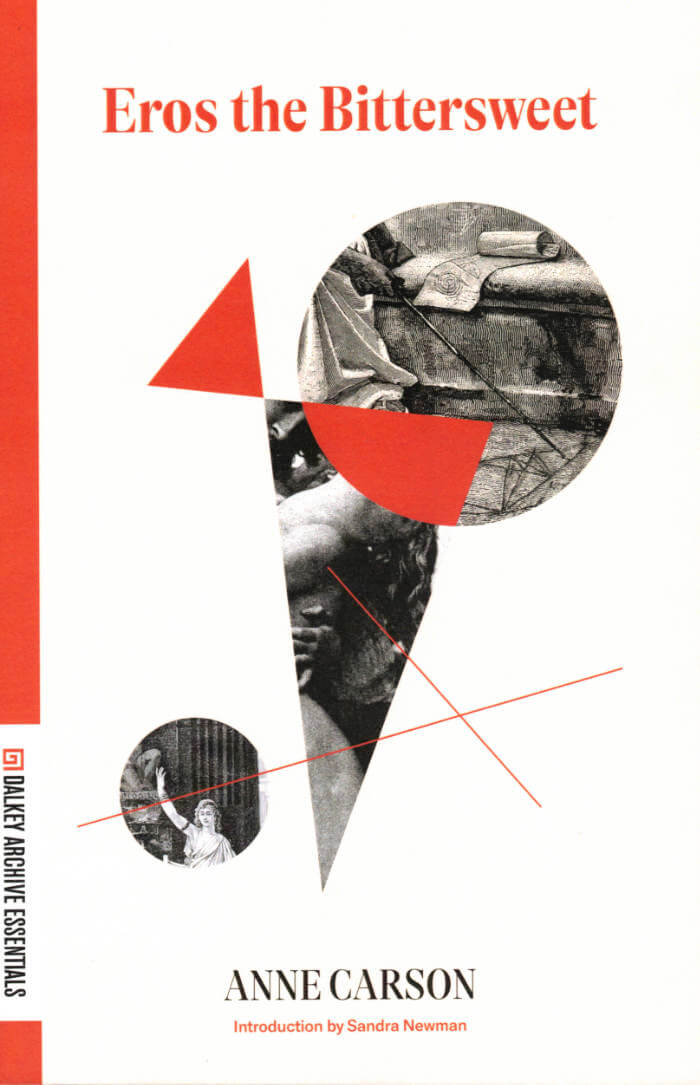
Eros the Bittersweet
A book about romantic love, Eros the Bittersweet is Anne Carson's exploration of the concept of "eros" in both classical philosophy and literature. Beginning with, "It was Sappho who first called eros 'bittersweet.' No one who has been in love disputes her," Carson examines her subject from numerous points of view, creating a lyrical meditation in the tradition of William Carlos Williams's Spring and All and William H. Gass's On Being Blue.

Fake Accounts
On the eve of Donald Trump's inauguration, a young woman snoops through her boyfriend's phone and makes a startling discovery: he's an anonymous internet conspiracy theorist, and a popular one at that. Already fluent in internet fakery, irony, and outrage, she's not exactly shocked by the revelation.
Actually, she's relieved-he was always a little distant-and she plots to end their floundering relationship while on a trip to the Women's March in D.C. But the uncovering of his double life is only the first in a series of bizarre twists that expose a world whose truths are shaped by online lies. Suddenly left with no reason to stay in New York-or to be anywhere in particular-our unnamed narrator flees to Berlin, embarking on her own cycles of manipulation in the deceptive spaces of her daily life, from dating apps to expat meetups, open-plan offices to bureaucratic waiting rooms

Blueberries
Blueberries could be described as a collection of essays, the closest term available for a book that resists classification: a blend of personal essay, polemic, prose poetry, true-crime journalism and confession that considers a fragmented life, reflecting on what it means to be a woman, a body, an artist. It is both a memoir and an interrogation of memoir. It is a new horizon in storytelling.
In crystalline prose, Savage explores the essential questions of the examined life: what is it to desire? What is it to accommodate oneself to the world? And at what cost?

Reader
Reader is the first anthology to gather Constance DeJong’s diverse body of writing. Spanning from the 1980s to the present, the publication features eighteen works by DeJong, including out-of-print and previously unpublished fiction, as well as texts emanating from her new media sculptures, sound works, video works, and public art commissions.
An influential figure of the 1970s and ’80s downtown New York writing and performance scene, Constance DeJong has channeled time and language as mediums in her work for the last four decades, expanding the possibilities of narrative form and literary genre. From the earliest work collected here—a manuscript of DeJong’s 1982 prose text I.T.I.L.O.E.—to the digital project Nightwriters (2017-18), Reader assembles a range of experimental texts by the artist. The volume includes such works as the 2013 publication and performance, SpeakChamber and the script for Relatives (1988), a duet between a television and a performer made in collaboration with artist Tony Oursler. Never-before-published works including texts created for re-engineered vintage radios, aphorisms commissioned for a Times Square digital billboard, and transcripts for sound works originally installed along the Thames and Hudson rivers are also featured in the book.
Taken together, these works showcase how DeJong has helped define and push the boundaries of language in the visual and performing arts. The artist’s sustained exploration of language blurs the lines between many fields, and DeJong’s work has also had a long life in the literary world. In the late 1970s, she self-published the critically acclaimed novel Modern Love on her short-lived Standard Editions imprint. On the 40th anniversary of the novel’s original publication, the book was published in facsimile form by Primary Information and Ugly Duckling Presse, and has gone on to sell over 10,000 copies since its release in 2017.
Constance DeJong is a New York-based artist who has exhibited and performed internationally. Her work has been presented at the Renaissance Society, Chicago; the Walker Art Center, Minneapolis; the Wexner Center for the Arts, Columbus; the Philadelphia Museum of Art; and in New York at the Dia Art Foundation; The Kitchen, Thread Waxing Space, and the Whitney Museum of American Art. In 1983 she composed the libretto for Satyagraha, the Philip Glass opera, which has been staged at opera houses worldwide, including the Metropolitan Opera, New York; the Netherlands National Opera, Rotterdam; and the Brooklyn Academy of Music, New York. She has permanent audio-text installations in Beacon, New York; London; and Seattle. DeJong has published several books of fiction, including her celebrated Modern Love (Standard Editions, 1977; Primary Information/Ugly Duckling Presse, 2017), I.T.I.L.O.E. (Top Stories, 1983), and SpeakChamber (Bureau, 2013), and her work is included in the anthologies Up is Up, But So is Down: New York’s Downtown Literary Science, 1974-1991 (NYU Press, 2006); Blasted Allegories (New Museum/MIT, 1987), and Wild History (Tanam Press, 1985).
—
Editor: Rachel Valinsky
Designer: Freer Studio
Copy editor: Allison Dubinsky

PUBLICING: Practicing Democracy Through Performance
The book draws on the performance project The Practice of Democracy/An Analogue Campaign, which ran from 2019-2021 in different European cities. It is written in two parts, interspersed with fragments from the project's performance score. The introduction sets the theoretical and critical ground for the book, discussing the current crises of politics, democracy, and social imagination across Europe and the Western world, and the way performance relates to these crises.
Part I introduces the newly proposed neologism publicing as a term and practice inflecting a new understanding of the relation of art to politics, marking a shift from "relational aesthetics" and "participatory art" to speculative artistic processes that construct public space in ways distinct from the dominant neoliberal ones. Part I further proposes some working principles through which performance might construct more affective experiences of publicness.
Part II hosts the voices of people who took part in The Practice of Democracy/An Analogue Campaign, and of other art workers exploring the relation between arts, politics, and democracy. Every contribution makes a concrete suggestion about the way artistic processes might assist the reactivation of democratic practices and the emergence of different social imaginaries.